
Biosphere Reserve Askania-Nova is the core zone of the reserve of the same name. This status was granted to the territories back in 1984. The reserve takes care of one of the oldest protected areas in Europe and a unique steppe. Historically formed landscapes of the reserve combine natural and man-made ecosystems: steppes, meadows, a dendrological park, and a zoo.

At the time of its foundation, the Zoological Park Askania-Nova was considered the zoo of the future because the animals here live in conditions very close to wild nature. The picture shows a subspecies of Kulan, living in semi-wild conditions in the Biosphere Reserve Askania-Nova. Photo: Viktor Havrylenko
What is the problem?
The first weeks of the invasion: searching for fortifications in the zoo and stealing
From the first hours of the invasion of Russian troops into Ukraine on February 24, 2022, Askania-Nova found itself in the zone of temporary occupation. Since the invasion, 44% of Ukraine's natural reserve fund areas have been in the risk zone due to potential fires, hostilities, and the passage of military equipment. Starting from March 5, 2022, the Russian military engaged in purposefully public but fruitless searches for armed 'nationalist battalions' and military fortifications on the territory of the community. "The next 'visit' took place in two weeks," Viktor Shapoval, director of the Askania-Nova biosphere reserve, writes in his chronology of hostilities.
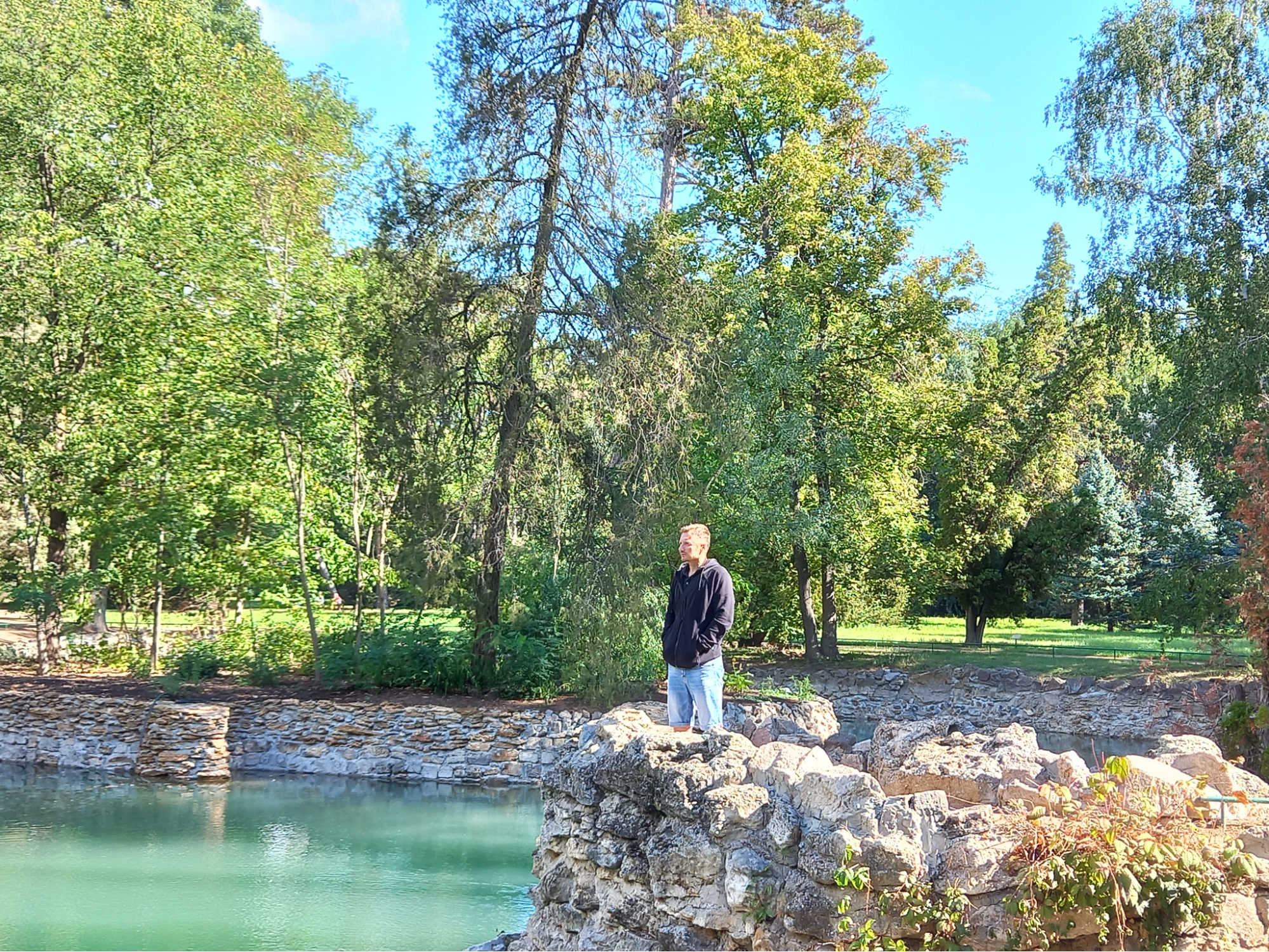
Viktor Shapoval, director of the Askania-Nova biosphere reserve near the pond, which the reserve's team cleaned already after the occupation. Photo: Tetyana Starovoytova
Despite the actual occupation of the territories, Ascania-Nova continued to work under the Ukrainian regime for more than a year, either by a lucky coincidence or due to the lack of interest on the part of the Russians. You can read Rubryka's piece on the reserve's work during that time here. At that time, there were no occupying self-appointed administrations in the reserve, but there was constant danger — both for the reserve's employees and nature.
Even without explosions, war is stressful for animals
A huge and unsolvable problem for the zoo's animals has become the regular flights of aircraft of the armed forces of the Russian Federation. This led to stress among the animals, their injuries, and in some cases — to death. First of all, this affected the ungulates, excessively timid by natural temperament. In a panic, one male Nilgaw antelope crashed and broke its neck against the enclosure fence in August 2022. "Cases of abortion in mares of Przewalski's horse and Turkmen's kulan could have been caused by stress," recalls Shapoval.

African ostriches are residents of the Biosphere Reserve Zoo Askania-Nova. Photo: Tetyana Starovoytova
There were five fires during the occupation period on the Biosphere Reserve Askania-Nova territory. According to the information of the State Inspectorate of the Southern District, almost one and a half thousand hectares of protected areas were burned.
Where the myths about "laboratories for the production of biological weapons" come from
Russian propagandists like to mention Ukrainian biological weapons laboratories. Similar absurd statements about "biological laboratories with highly pathogenic virus strains" and "releases of ringed infected birds from the Biosphere Reserve Askania-Nova in the interests of the military biological program" were made by the official representative of the Ministry of Defense of the Russian Federation.
In his memoirs, Shapoval described one of the episodes during the occupation, which was used against Ukraine in Russian propaganda policy. In February 2023, about 30 birds died in Askania-Nova due to illness. The reserve team followed the usual protocol for treating infectious diseases and thus prevented an epidemic. However, the occupiers decided to use the episode to their advantage — they analyzed the biological material of the dead birds in the Crimean laboratory and allegedly found "bird flu." Ascania-Nova couldn't send biomaterial for analysis to Ukraine, but the reserve employees did not believe in the myth of the occupiers about "bird flu."
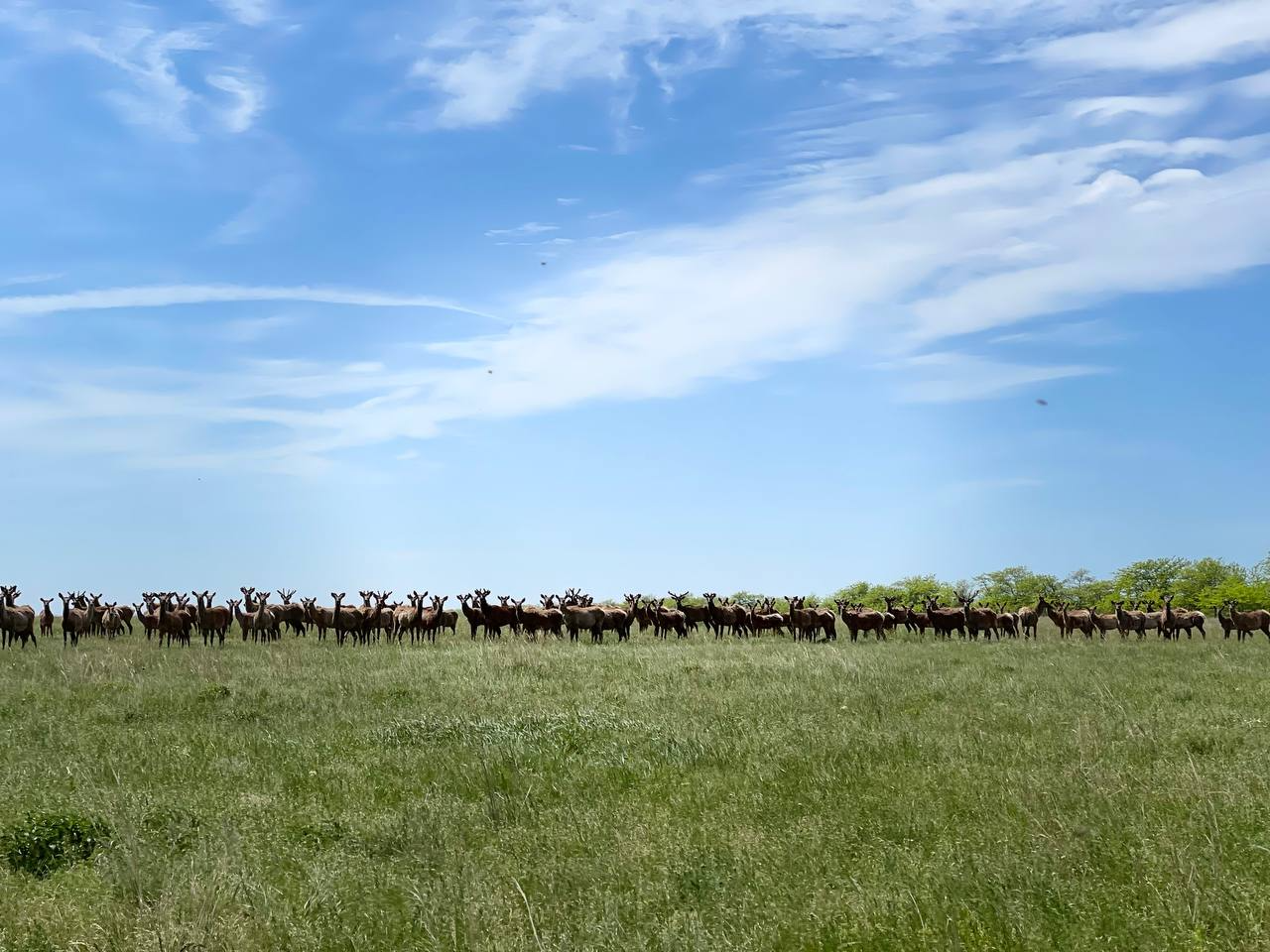
After the occupiers appointed their administration, there was a risk of the Russians appropriating the zoological collection of the Askania-Nova Biosphere Reserve. Photo: Administration of the Askania-Nova Biosphere Reserve
The Russians used the invented precedent of bird flu to create fakes. It turned out that the occupiers mistook an ordinary refrigerator for a biolaboratory, in which samples of biomaterial collected during research with international partners have been kept since 2021.
What happened after the appointment of the occupation administration until now?
In March 2023, the Russian Federation appointed its own occupation administration of the Askania-Nova nature reserve.
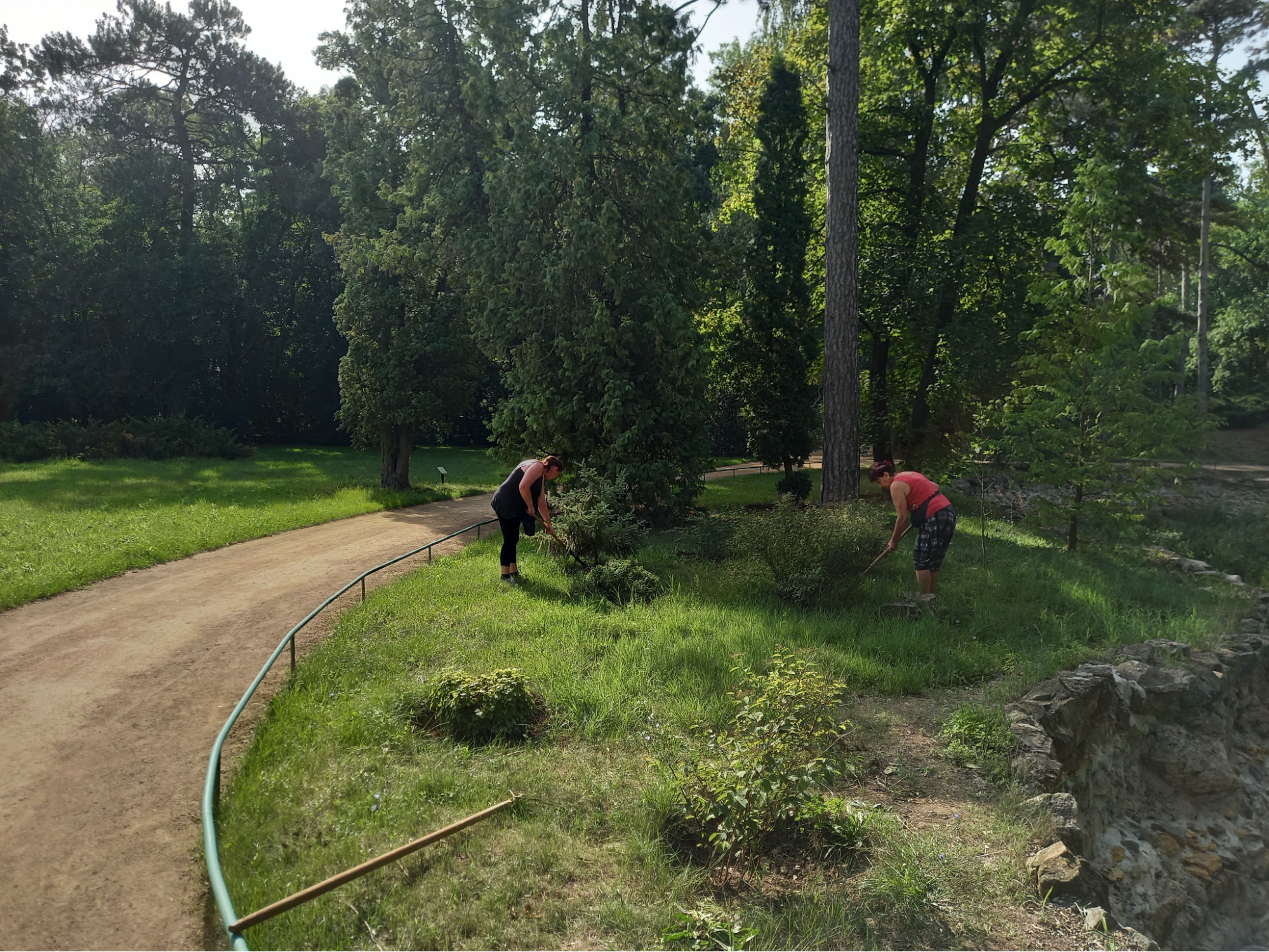
Work in the Dendropark of the Biosphere Reserve Askania-Nova continued even during the war. Photo: Tetyana Starovoytova
According to the director of the reserve, what has kept Askania-Nova afloat thus far are its momentum, accumulated resources, and experienced technical personnel. Currently, out of the 268 full-time employees, only 140 remain, primarily service workers responsible for caring for the zoo animals and maintaining the dendropark. Many of them are hostages of circumstances as they are deeply committed to preserving Ukrainian property and collections located in the temporarily occupied Ukrainian territory against all odds. As a result, necessary work is being carried out despite the circumstances. However, the Russian administration strictly prohibits the remaining personnel from communicating with the current Ukrainian reserve administration in the liberated territories.
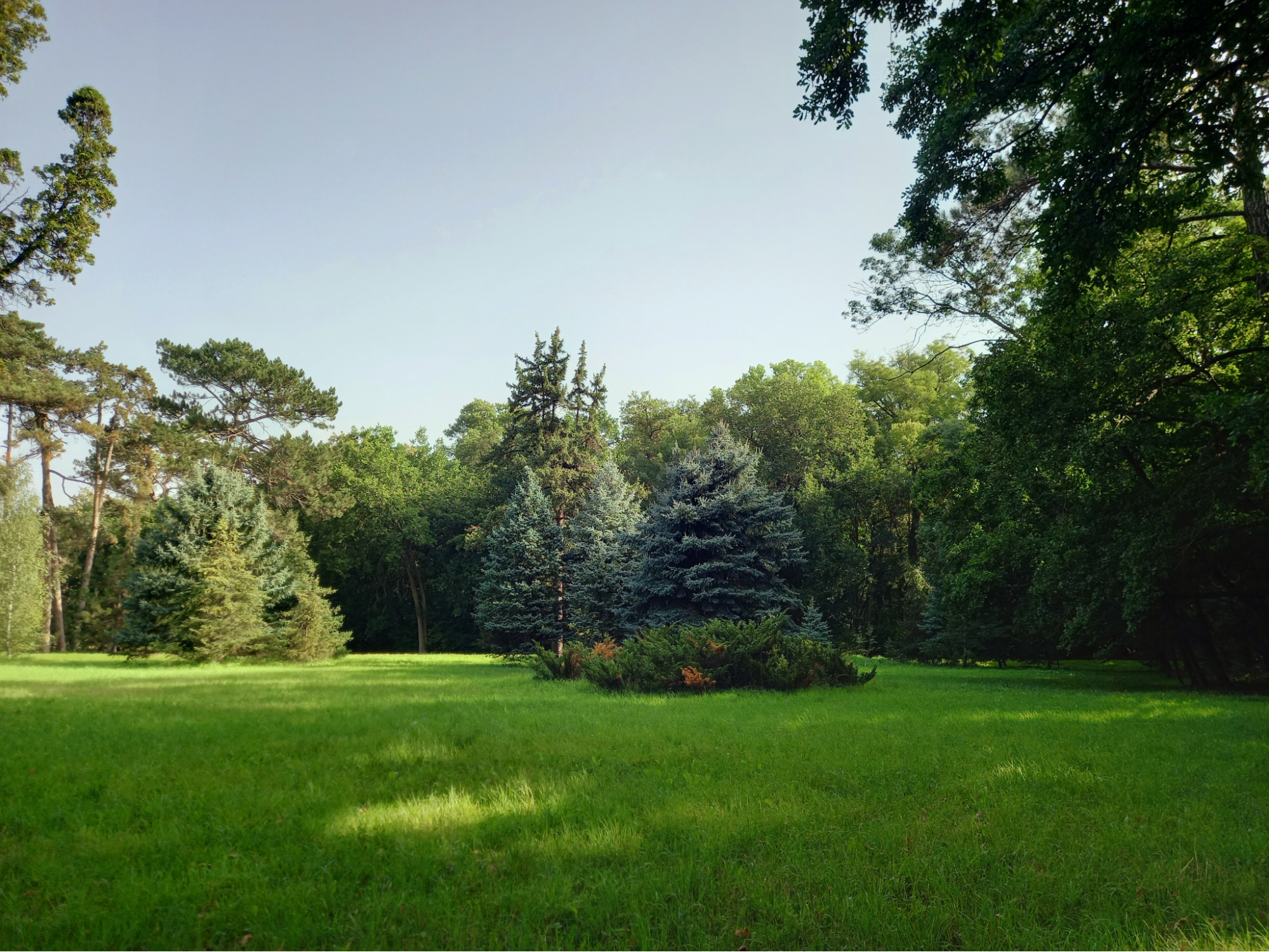
The situation in Askania-Nova differs from other biosphere reserves or national parks that are currently occupied. Unlike natural forests that can survive if left untouched, the dendropark in Askania-Nova requires continuous irrigation to prevent the trees from dying. Photo: Administration of the Biosphere Reserve Askania-Nova
"We cannot influence the current state and current processes in the reserve, although we are sufficiently aware of the situation and informed about the course of events," Shapoval believes.
All assets and property within the reserve are currently at risk. There is a significant danger of the virgin steppe experiencing widespread fires. Moreover, the perennial plantings in the dendropark, which also serve as hiding spots for military equipment belonging to Russia, are at risk of damage and destruction. The problems of supplying artesian water for irrigation and the functioning of reservoirs and watering holes are worsening, and the actual situation regarding the mining of the territory is unknown. In addition, the occupying administration might arrange the illegal relocation of the zoo collection to Russia.
What is the solution?
Look for solutions among problems
Since the beginning of the occupation, the animal collection of Askania-Nova — 3,597 individuals — has been under threat. These are species included in the regional protection list, the Red Book of Ukraine, the European Red List, the IUCN Red List, and international environmental agreements. Although the institution had a certain margin of safety on the eve of the invasion, the accumulated material resources, primarily forage and fuel, were limited.
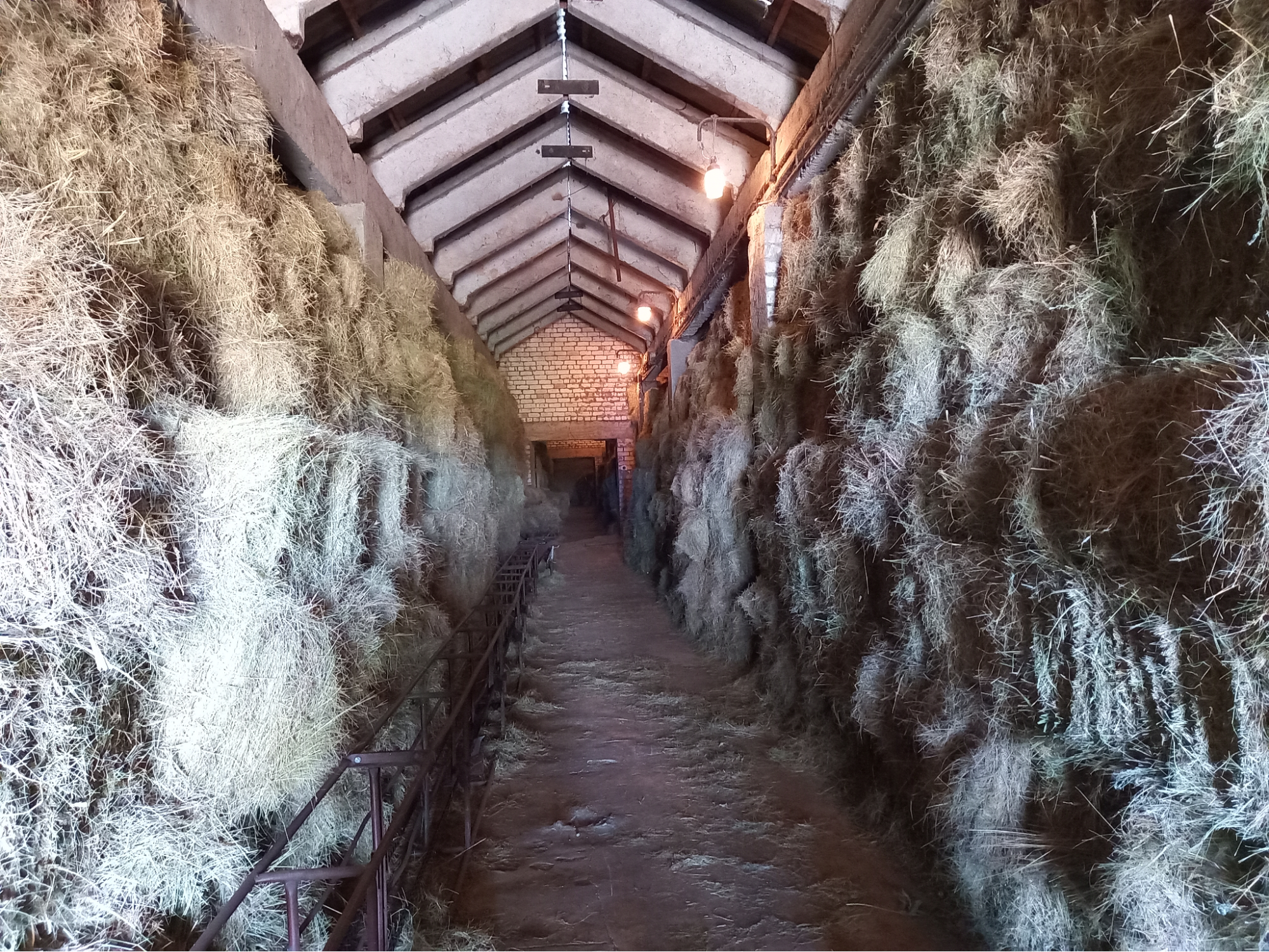
Despite the occupation, hay production in Askania continued. Photo: Administration of the Biosphere Reserve Askania-Nova
However, a critical issue arose with concentrated fodder due to disrupted transport logistics between the left-bank part of the Kherson region and the controlled territory of Ukraine, mainly caused by the front line. In 2022, a limited communication channel through the Vasylivka checkpoint in the Zaporizhzhia region was available, albeit challenging and dangerous due to shelling, roadblocks, inspections, and filtering measures. Despite efforts, waiting for humanitarian corridors and convoys from the controlled territory of Ukraine for fodder delivery proved futile.
As the reserve was under occupation, it couldn't receive budget allocations from Ukraine. To address the fodder shortage, a greenhouse was constructed to grow vegetables and greenery during autumn and winter, ensuring a sustainable supply for the zoo. Despite the difficulties, this approach helped mitigate the challenges of providing juicy fodder in the reserve.
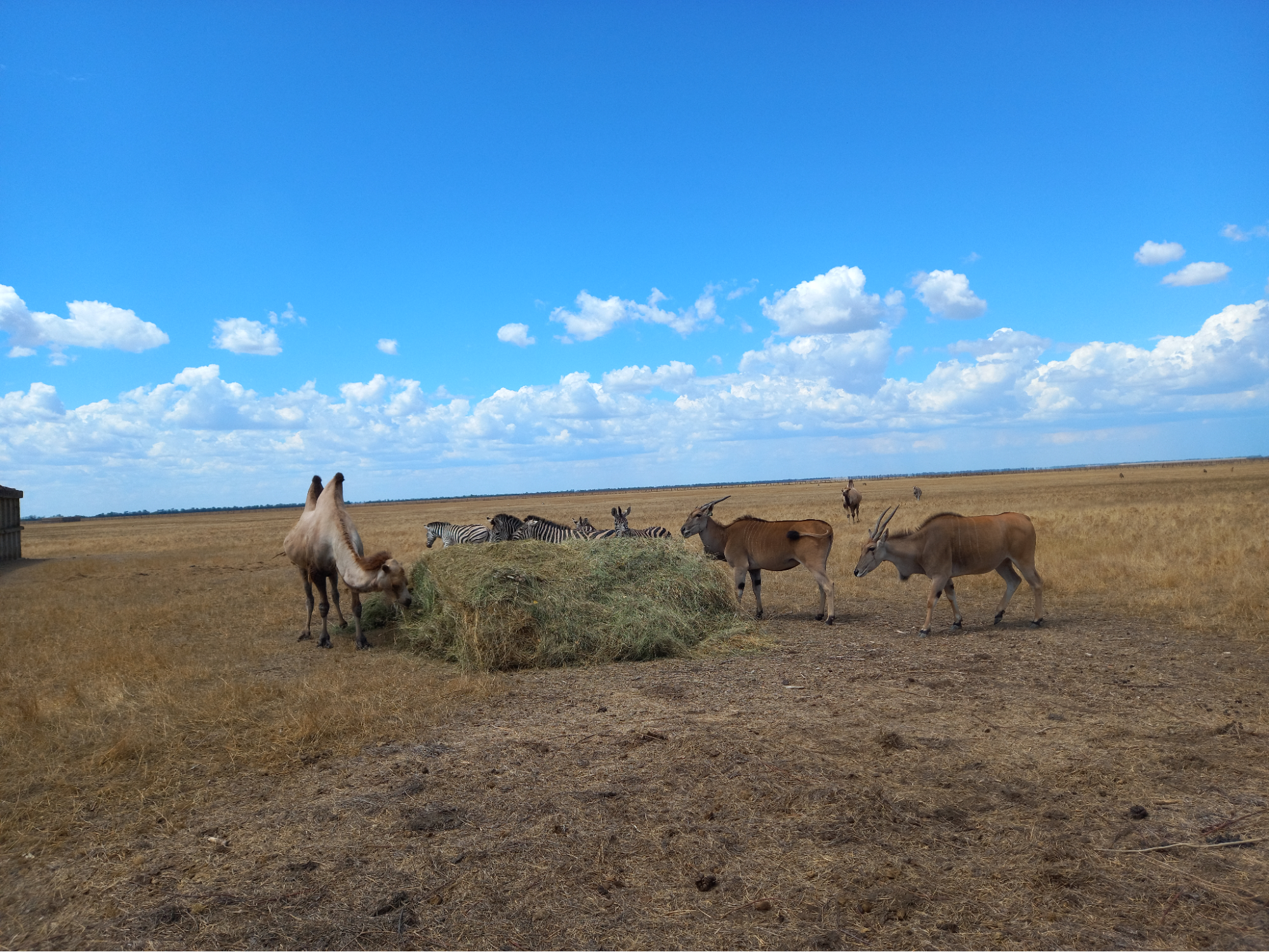
Animals living in Askania-Nova exist in semi-wild conditions and, therefore, still need human help. Photo: Tetyana Starovoytova
International and Ukrainian environmental protection organizations came to the rescue. Collecting charitable assistance, volunteers sent fodder for animals, spare parts for equipment that works in the institution, and other necessary things to the reserve. They helped evacuate people to Ukraine-controlled territories and later even began to pay salaries to the employees of Askania-Nova.
"Askania-Nova has been making a name for itself for more than a century, and in the most critical period of modern history, the name worked for Askania," the reserve director explains.
During the 13 months of work of the Ukrainian administration in the occupation, it was possible to prevent wage arrears and to cover all critical needs from a special fund.
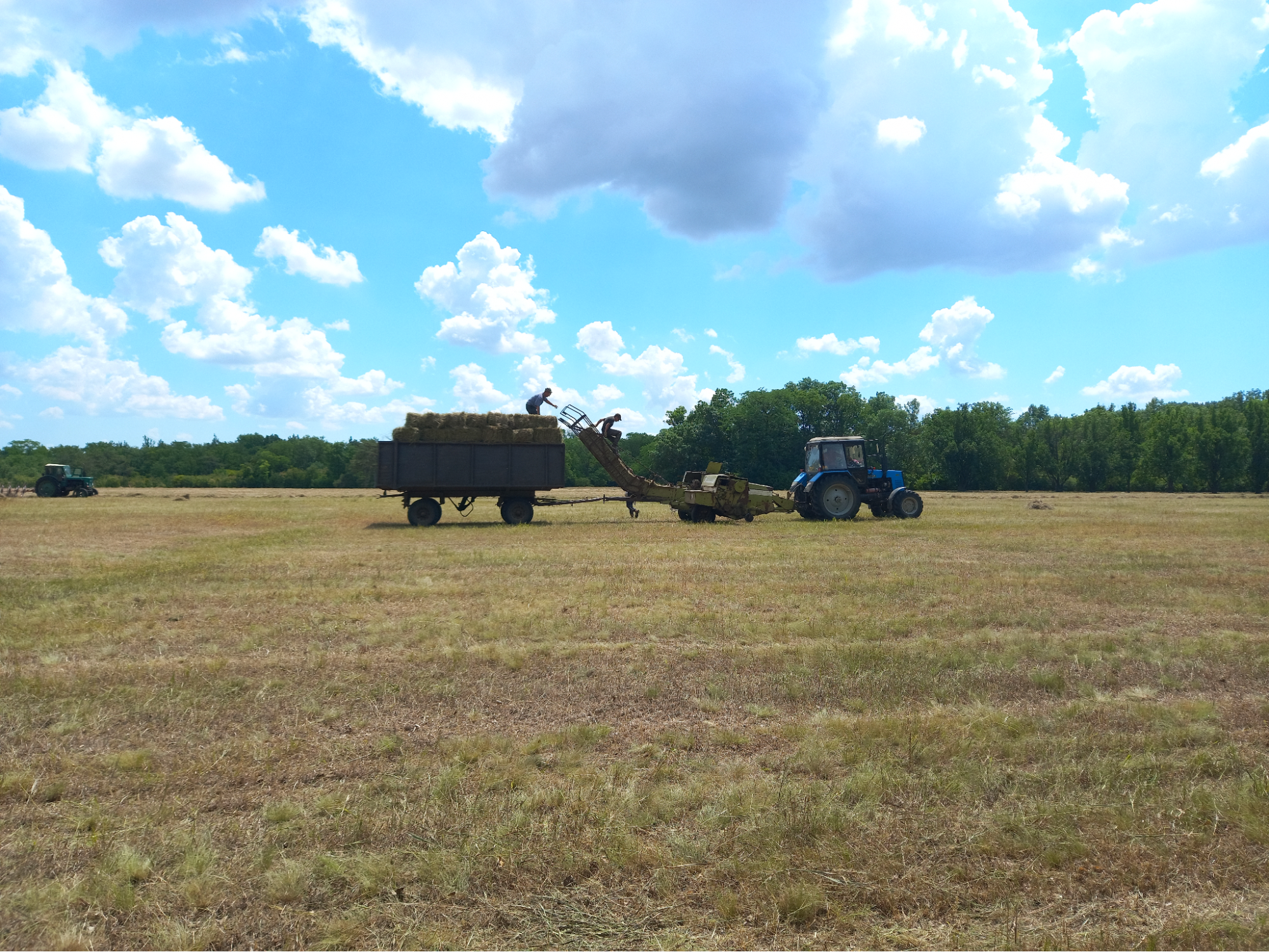
Harvesting hay for animals of the Askania-Nova biosphere reserve. During the first year of the war, the institution worked in the Ukrainian format — volunteers transferred money for fuel, spare parts, and purchasing fodder from the Ukraine-controlled territories. Photo: Tetyana Starovoytova
Technologies in action or limited work format: How to work in an occupied environmental protection institution?
The Biosphere Reserve Askania-Nova is still functioning in the limited format of a scientific research institution. Scientists try to maintain the highest possible level of implementation of the scientific research program. For this, archival materials, information bases, primary documentation, registers, and collected actual data are used.
In particular, they use data obtained with the help of earth remote sensing technologies, that is, satellite images that provide NDVI (Normalized Difference Vegetation Index) data. Although it is impossible to name the exact number of plants in the reserve with the help of NDVI, it is still possible to get certain data from satellite images. In particular, this includes data on soil moisture, evaporation, precipitation, and snow cover parameters.
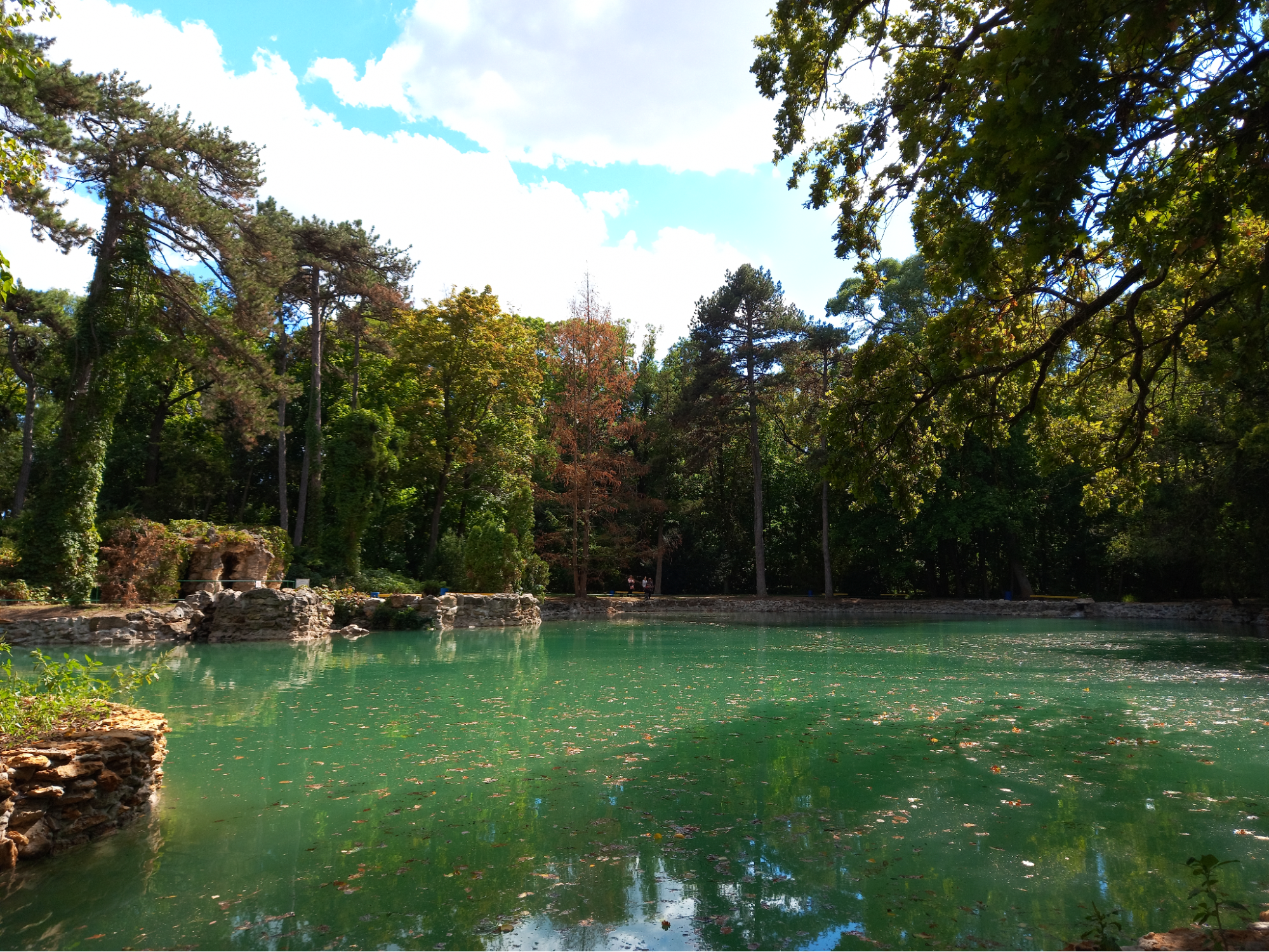
Pond in Askania-Nova. Photo: Administration of the Biosphere Reserve Askania-Nova
Scientists from several institutions at once, including the reserve itself, the Ukrainian Botanical Society, and the Institute of Biology and Medicine, concluded that despite the distance from the Kakhovka reservoir, the Dnipro delta, and the Black Sea coast, the detonation of the Kakhovka dam could affect the ecosystem of the Askania steppe. They assumed that Russia's act may lead to a decrease in the water supply of the soils of the Askanian steppe for some time, which may also affect the number of plants.
To preserve and restore territories, we need new norms of international law and an increase in protected territories in Ukraine
According to Ukraine's legislation, the intentional destruction or damage of territories taken under state protection and objects of the nature reserve fund is considered a crime. Destruction of ecosystems and destruction of biodiversity during war is a war crime under international law. However, the full-scale invasion showed that even the highest international level of certification of the institution was insufficient to prevent the occupation of the territory by Russian troops.
The solution to this problem has not yet been found. Still, some environmentalists emphasized the need for new international standards, obligations, and mechanisms of influence to preserve the natural heritage of world importance. This would not allow military clashes in these territories, the passage of troops, or the dislocation of military formations.
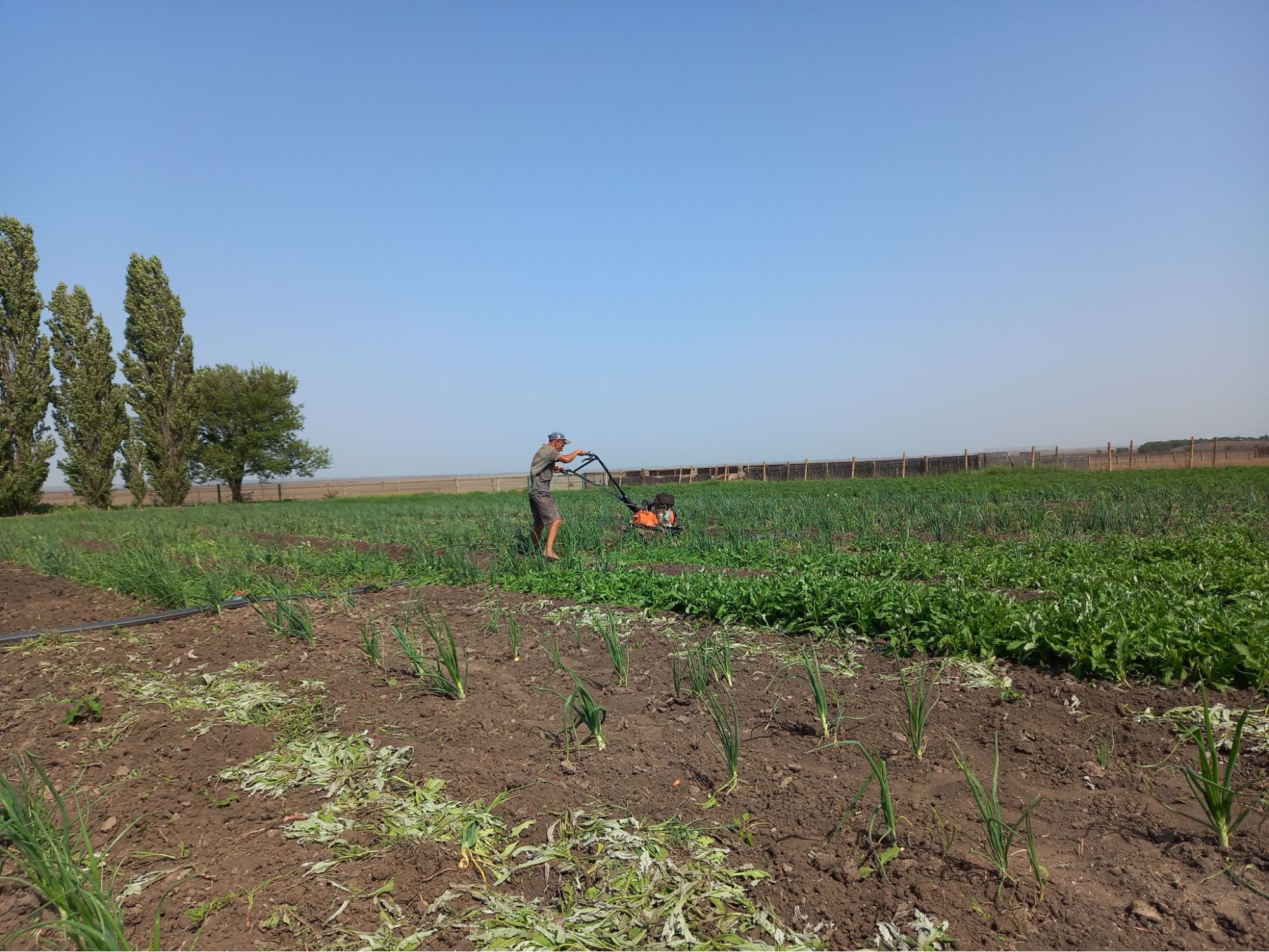
Animals of the reserve are fed not only hay but also greens. To do this, the reserve's team grew plants and made greenhouses during the war. Photo: Tetyana Starovoytova
As for the current damage to 44% of the territories of the Nature Reserve Fund of Ukraine — there is also a solution. Oleksii Vasylyuk, the head of the Ukrainian Nature Conservation Group, proposed a rather non-obvious but effective solution — to create new territories for the nature reserve fund and thus compensate for the lost ones.
"Part of these territories awaiting creation are now temporarily occupied, but legally, this is not an obstacle to their declaration even before the territory is liberated," the scientist writes in one of his recently published papers.
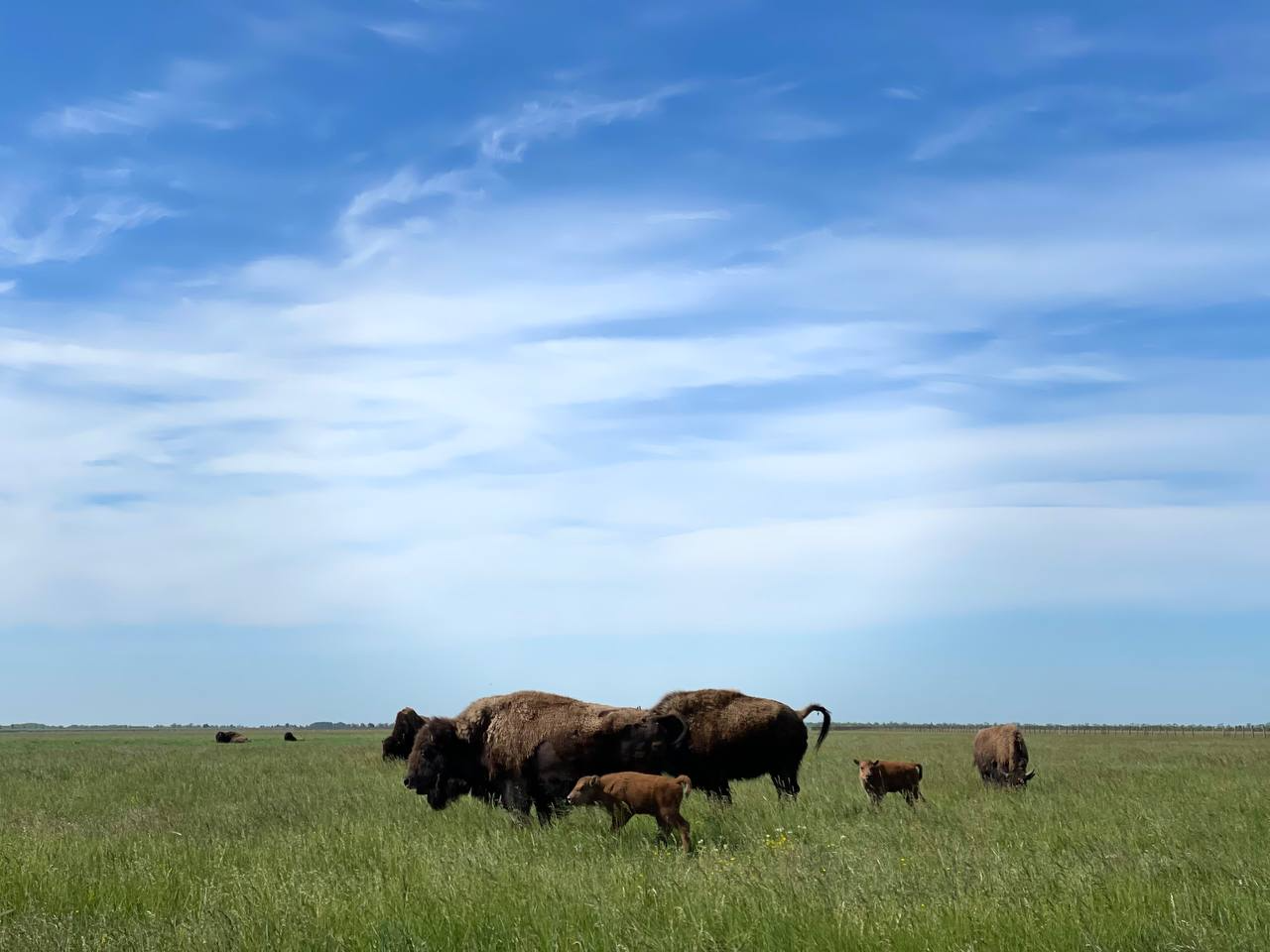
Among all European zoos, the largest herd of American bison is kept in the Biosphere Reserve Askania-Nova — more than 80 individuals. Photo: Administration of the Biosphere Reserve Askania-Nova
Doing it legally is not that difficult. It is only necessary to sign draft decrees on creating or expanding existing national parks and instruct the regional military-civilian administrations in temporarily occupied territories to develop relevant projects and decisions.
Expanding territories and changing international law are almost the only ways to save those protected territories under occupation and on the line of combat clashes. However, there is still a chance for recovery. Askania-Nova is ready to return home to Ukraine.







